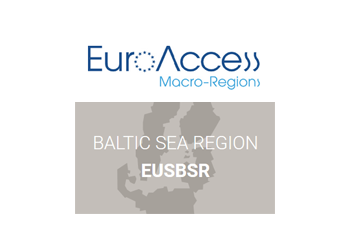EU Strategy for the Baltic Sea Region
NEWS
The area covered by the EUSBSR is mainly the basin of the Baltic Sea, including also the hinterlands. It stretches from the Lapland to the North of Germany and is home to around 85 million inhabitants, involving 8 EU Member States (Denmark, Estonia, Finland, Germany, Latvia, Lithuania, Poland, Sweden). It is the second largest and most diverse macro-regional strategy EU Member States.

The European Union Strategy for the Baltic Sea Region (EUSBSR) is the first Macro-regional Strategy in Europe. The Strategy was approved by the European Council in 2009 following a communication and an action plan from the European Commission. The Commission publishes regular reports on the implementation of the EU Strategy for the Baltic Sea Region.
The European Commission coordinates the efforts of the EU Strategy for the Baltic Sea Region. For news and information on the activities and progress of the Strategy as curated by the various stakeholders, please visit the EUSBSR's dedicated website at www.balticsea-region-strategy.eu .
The Strategy is divided into three objectives, which represent the three key challenges of the Strategy: saving the sea, connecting the region and increasing prosperity. Each objective relates to a wide range of policies and has an impact on the other objectives. The Strategy helps to mobilise all relevant EU funding and policies and coordinate the actions of the European Union, EU countries, regions, pan-Baltic organisations, financing institutions and non-governmental bodies to promote a more balanced development of the Baltic Sea Region.
The Baltic region defines several sub-objectives
- Clear water in the sea
- Rich and healthy wildlife
- Clean and safe shipping
- Good transport conditions
- Reliable energy markets
- Connecting people in the region
- Baltic Sea Region as a frontrunner for deepening and fulfilling the single market
- EUSBSR contributing to the implementation of Europe 2020 strategy
- Climate change adaptation, risk prevention and management
Better coordination and cooperation between the countries and regions is needed to address these challenges.
The Strategy does not come with extra EU finance but it is supported from the resources already available according to an integrated approach. Countries may also make use of the funding they receive through EU cohesion policy, other EU programmes and financial instruments, and various international financial institutions. To know more about financial opportunities visit www.balticsea-region-strategy.eu/about/funding-sources
- Since 2004, the majority of the countries in the Baltic Sea region are EU countries.
- Many of the problems are covered by EU policy.
- As an independent player with respected authority, the EU is in a good position to facilitate cooperation.
- The EU already runs programmes in the region and so can provide opportunities for cooperation.
As for the implementation, the Strategy will be based on the key principles applied for the existing macro-regional strategies: no new EU funds, no additional EU formal structures and no EU legislation, while relying on a coordinated approach, synergy effects and a more effective use of existing EU funds and other financial instruments. The aim is to produce a clear added value based on jointly identified objectives.
Achievements so far include:
- Support for new projects, including cooperation between farmers to reduce eutrophication and improved planning for transport infrastructure;
- Greater involvement of Russian partners in areas like environmental protection, water quality and innovation;
- Improved cooperation between regions and other partners, including the private sector
To get in contact with the EUSBSR team in DG REGIO, please email the secretary of the REGIO. DDG.D1: REGIO-TRANSNATIONAL-AND-INTERREGIONAL-COOPERATION@ec.europa.eu.
For more information on how to get in contact with EUSBSR stakeholders, please visit the EUSBSR website.

